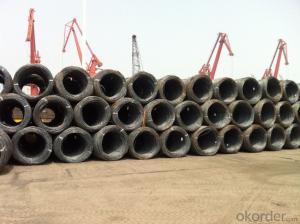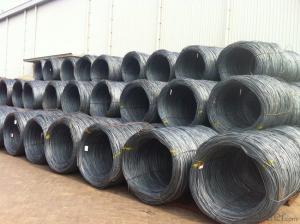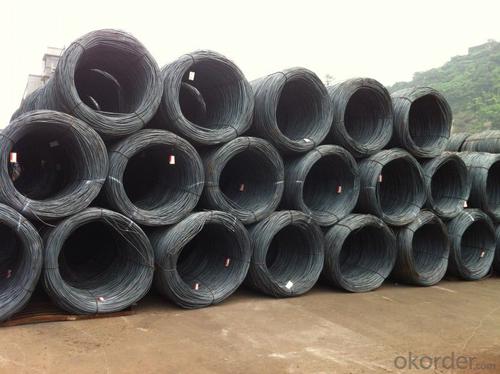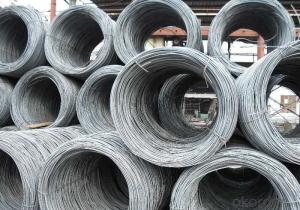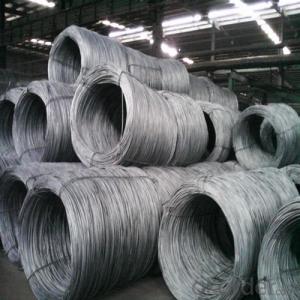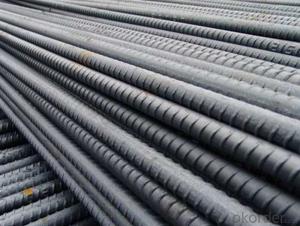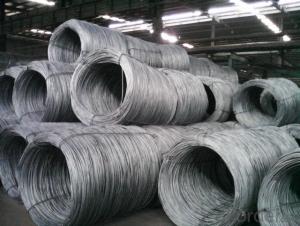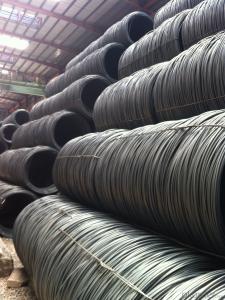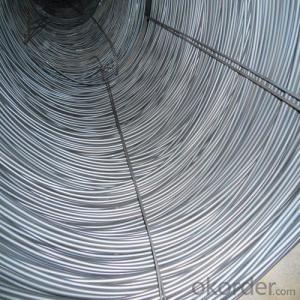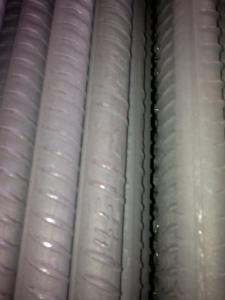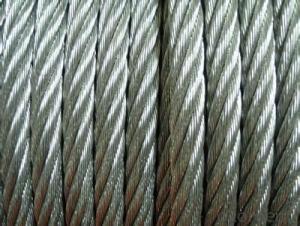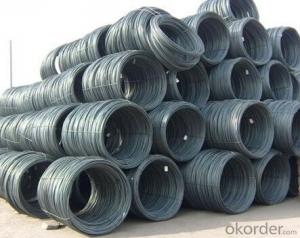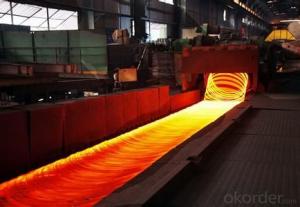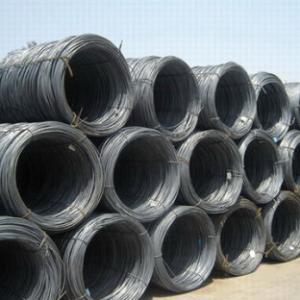Hot Rolled Wire rod SAE 1006-1018 with lowest price
- Loading Port:
- Tianjin
- Payment Terms:
- TT OR LC
- Min Order Qty:
- 25 m.t.
- Supply Capability:
- 10000 m.t./month
OKorder Service Pledge
OKorder Financial Service
You Might Also Like
Product Description:
OKorder is offering high quality products at great prices with worldwide shipping. Our supplier is a world-class manufacturer of steel, with our products utilized the world over. OKorder annually supplies products to European, North American and Asian markets. We provide quotations within 24 hours of receiving an inquiry and guarantee competitive prices.
Product Applications:
After hot-rolled the products shaped into coil and delivery as finished product, including round, square, rectangular, hexagonal and so on, Since most of the products are round, it is generally called wire rod. Steel wire rod is widely used in construction and manufacturing. Steel wire rod is mainly used for reinforcement of reinforced concrete and welded structure or reprocessed (roberts, nail etc) materials, especially used to produce wire drawing, welding electrode, nails,spring, electronic, precise machinery parts and so on.
Product Advantages:
OKorder's wire rods are durable, strong, and resist corrosion.
Main Product Features:
· Premium quality
· Prompt delivery & seaworthy packing (30 days after receiving deposit)
· Corrosion resistance
· Can be recycled and reused
· Mill test certification
· Professional Service
· Competitive pricing
Product Specifications:
Manufacture: Hot rolled
Grade: SAE1006-1018
Certificates: ISO, SGS, BV, CIQ
Packaging: Export packing, nude packing, In Coils
Grade | Chemical Composition (%) | |||||
C | Mn | S | P | Si | B | |
SAE1006B | 0.03~O.07 | 0.32max | 0.045max | 0.040max | 0.30max | 0.0008min |
Mechanical properties | ||||||
Yield strength(N/mm2) | Tensile strength(N/mm2) | Elongation (%) | ||||
250-280 | 350-380 | ≥32 | ||||
Grade | Chemical Composition (%) | |||||
C | Mn | S | P | Si | B | |
SAE1008B | 0.10max | 0.3~0.50 | 0.050max | 0.040 max | 0.15max | 0.0008 min |
Mechanical properties | ||||||
Yield strength(N/mm2) | Tensile strength(N/mm2) | Elongation (%) | ||||
≥195 | 315-430 | ≥30 | ||||
FAQ:
Q1: Why buy Materials & Equipment from OKorder.com?
A1: All products offered byOKorder.com are carefully selected from China's most reliable manufacturing enterprises. Through its ISO certifications, OKorder.com adheres to the highest standards and a commitment to supply chain safety and customer satisfaction.
Q2: How do we guarantee the quality of our products?
A2: We have established an advanced quality management system which conducts strict quality tests at every step, from raw materials to the final product. At the same time, we provide extensive follow-up service assurances as required.
Q3: How soon can we receive the products?
A3: Within three days of placing an order, we will begin production. The specific shipping date is dependent upon international and government factors, but is typically 7 to 10 workdays.
Images:
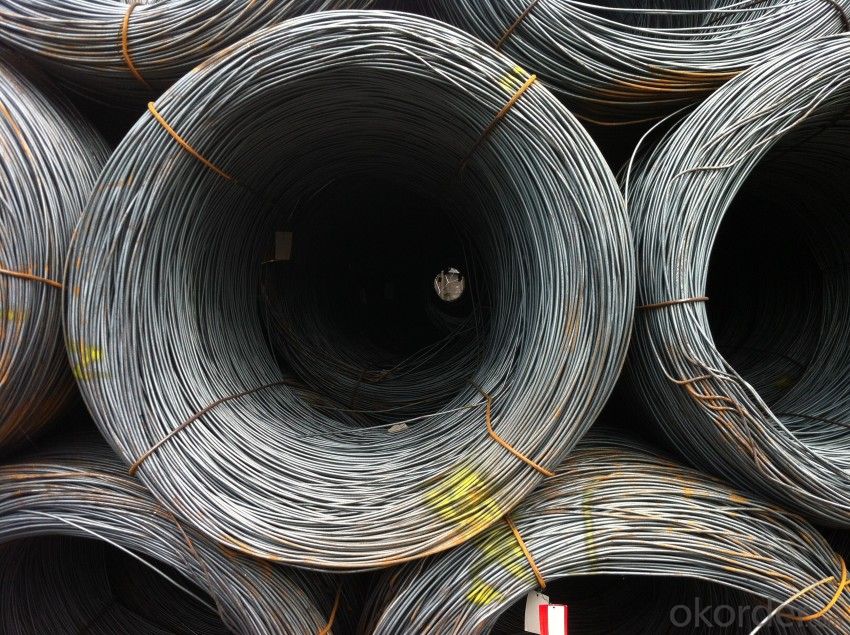

- Q: What are the advantages of using steel wire rod in architectural applications?
- The advantages of using steel wire rod in architectural applications are its high strength and durability, as well as its versatility and aesthetic appeal. Steel wire rod provides structural stability and can withstand heavy loads, making it suitable for applications such as reinforcing concrete structures or creating tension cables for suspension systems. Additionally, steel wire rod can be easily shaped and manipulated, allowing for intricate designs and complex architectural forms. Its smooth surface finish also adds a sleek and modern look to architectural projects.
- Q: What are the environmental considerations associated with steel wire rod production?
- The environmental considerations associated with steel wire rod production include energy consumption, greenhouse gas emissions, water usage, waste generation, and potential impact on surrounding ecosystems. The production process involves high energy requirements, mainly from electricity and fuel consumption, contributing to carbon dioxide emissions. Water is often used for cooling and cleaning purposes, leading to water scarcity concerns and potential contamination. Waste generation includes byproducts like slag and scale, which require proper disposal or recycling to minimize environmental impact. Additionally, the extraction of raw materials, such as iron ore and coal, can lead to habitat destruction and biodiversity loss. However, advancements in technology and sustainable practices are being implemented to reduce these environmental impacts and promote more eco-friendly steel production.
- Q: What are the common applications of carbon steel wire rod?
- Carbon steel wire rod has a wide range of applications due to its strength and versatility. Some common uses include construction materials, such as reinforcing concrete and manufacturing wire mesh; automotive parts, such as springs and wire cables; and industrial applications, such as welding electrodes and nails.
- Q: What are the common production processes for rhenium-coated steel wire rod?
- The common production processes for rhenium-coated steel wire rod typically include wire drawing, cleaning, coating, and heat treatment.
- Q: What are the advantages of using alloyed steel wire rod?
- There are several advantages of using alloyed steel wire rod. Firstly, alloyed steel wire rod offers improved strength and durability compared to regular steel wire rod. This makes it suitable for applications that require high tensile strength and resistance to wear and tear. Additionally, alloyed steel wire rod has better corrosion resistance, making it ideal for use in outdoor or corrosive environments. Furthermore, alloyed steel wire rod can be easily formed and manipulated, allowing for a wide range of applications in various industries such as automotive, construction, and manufacturing. Overall, the use of alloyed steel wire rod provides enhanced mechanical properties, increased longevity, and greater versatility compared to regular steel wire rod.
- Q: What are the main factors affecting the product innovation of steel wire rod?
- The main factors affecting the product innovation of steel wire rod include technological advancements, market demand, competition, government regulations, and environmental sustainability. Technological advancements play a crucial role in enhancing the quality, strength, and durability of steel wire rod. Market demand and competition drive manufacturers to continuously innovate and develop new products to meet customer needs and stay ahead in the market. Government regulations, such as safety standards and environmental regulations, also influence product innovation by setting requirements and guidelines that manufacturers must adhere to. Lastly, the focus on environmental sustainability has prompted the steel industry to develop innovative and eco-friendly products and processes, leading to further innovation in steel wire rod.
- Q: How is steel wire rod used in the manufacturing of wire forms for marine equipment?
- Steel wire rod is essential for producing wire forms used in marine equipment. Its exceptional strength, durability, and resistance to corrosion make it an integral component. The wire rod is the raw material that undergoes various manufacturing processes to create different wire forms for marine equipment. To begin, a careful selection process is carried out to choose steel wire rod based on its composition, quality, and mechanical properties. High tensile strength and corrosion resistance are crucial for withstanding the harsh saltwater environments that marine equipment is exposed to. Once the suitable steel wire rod is obtained, it undergoes a series of manufacturing processes. These processes include drawing, annealing, and coating. Drawing involves reducing the diameter of the wire rod by pulling it through progressively smaller dies to achieve the desired thickness. Annealing is performed to enhance the wire's ductility and relieve any stresses. Coating is often applied to further improve the wire forms' resistance to corrosion. The wire forms made from steel wire rod are widely used in marine equipment. They can be fabricated into various shapes and sizes, such as hooks, loops, springs, and clips. Common applications include fishing nets, boat rigging, anchor cables, and mooring lines. The strength and durability of steel wire rod ensure that the wire forms can withstand the challenging conditions of the marine environment, including heavy loads, constant saltwater exposure, and extreme weather. Moreover, the corrosion resistance properties of the wire forms contribute to their long lifespan, reducing the need for frequent replacements and maintenance. In conclusion, steel wire rod is crucial for manufacturing wire forms used in marine equipment. It provides the necessary strength, durability, and corrosion resistance to withstand the demanding conditions encountered at sea.
- Q: What are the different chemical analysis techniques for steel wire rod?
- There are several different chemical analysis techniques that can be used to analyze steel wire rod. These techniques are important in determining the composition and quality of the steel. One of the most common techniques is optical emission spectroscopy (OES). OES involves heating the sample to a high temperature and then analyzing the light emitted by the elements present in the steel. This technique can provide information about the concentrations of various elements, such as carbon, manganese, and sulfur, in the steel wire rod. Another technique that can be used is X-ray fluorescence (XRF) spectroscopy. XRF involves bombarding the sample with X-rays and then analyzing the fluorescent X-rays that are emitted. This technique can provide information about the elemental composition of the steel, including both major and trace elements. Inductively coupled plasma (ICP) spectroscopy is another commonly used technique for chemical analysis. ICP involves ionizing the elements in the steel sample and then analyzing the resulting emission spectra. This technique can provide information about the concentrations of various elements, including both metals and non-metals. Other techniques that can be used for chemical analysis of steel wire rod include atomic absorption spectroscopy (AAS), which measures the absorption of light by the sample, and mass spectrometry, which can provide information about the isotopic composition of the elements present in the steel. Overall, these chemical analysis techniques play a crucial role in ensuring the quality and integrity of steel wire rod by providing information about its elemental composition and impurity levels.
- Q: What are the common production processes for zinc-coated steel wire rod?
- The common production processes for zinc-coated steel wire rod include wire drawing, cleaning and pickling, zinc coating through either hot-dip galvanizing or electroplating, and final inspection and packaging.
- Q: How is steel wire rod used in the manufacturing of wire rope bins?
- Steel wire rod is used in the manufacturing of wire rope bins as it serves as the raw material for producing the wire ropes. The wire rod is first drawn through a series of dies to reduce its diameter and increase its tensile strength. These wire ropes are then intertwined and wound together to form the sturdy and durable structure of the wire rope bins.
Send your message to us
Hot Rolled Wire rod SAE 1006-1018 with lowest price
- Loading Port:
- Tianjin
- Payment Terms:
- TT OR LC
- Min Order Qty:
- 25 m.t.
- Supply Capability:
- 10000 m.t./month
OKorder Service Pledge
OKorder Financial Service
Similar products
Hot products
Hot Searches
Related keywords

